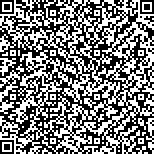彭越,刘慧勤,王冰.不同亚低温治疗时间结合静脉溶栓治疗对急性脑梗死患者认知功能及应激反应的影响[J].中华物理医学与康复杂志,2019,41(3):184-188
扫码阅读全文

|
| 不同亚低温治疗时间结合静脉溶栓治疗对急性脑梗死患者认知功能及应激反应的影响 |
|
| |
| DOI:DOI:10.3760/cma.j.issn.0254-1424.2019.03.005 |
| 中文关键词: 亚低温疗法 静脉溶栓 急性脑梗死 颅内压 |
| 英文关键词: Therapeutic hypothermia Intravenous thrombolysis Acute cerebral infarction Intracranial pressure |
| 基金项目:河南省科技厅科技攻关项目(162102310295) |
|
| 摘要点击次数: 5264 |
| 全文下载次数: 6296 |
| 中文摘要: |
| 目的 探讨不同亚低温治疗时间结合静脉溶栓治疗对急性脑梗死患者认知功能及应激反应的影响。 方法 选取本院自2016年6月至2017年6月收治的126例急性脑梗死患者作为研究对象,按随机数字表法分为对照组、研究1组和研究2组,每组42例。3组均给予静脉溶栓治疗,在此基础上研究1组行亚低温治疗12 h,研究2组行亚低温治疗24 h,采用美国国立卫生研究院脑卒中量表(NIHSS)评分对比各组患者溶栓前(治疗前)和治疗后1、7、14、30和90 d的神经功能变化及治疗14 d后的疗效;并于治疗前及治疗后2、3和7 d,对各组患者的颅内压、氧化应激水平、炎性细胞因子水平及安全性进行评价。 结果 研究1组、研究2组治疗后NIHSS评分均显著低于对照组(P<0.05),且研究2组较研究1组改善更加明显(P<0.05)。对照组、研究1组、研究2组的总有效率分别为59.5%、76.2%、85.7%,差异有统计学意义(χ2=7.636,P=0.022),以研究2组的总有效率最高,但研究1组和研究2组总有效率比较差异无统计学意义(P>0.05)。研究1组与研究2组在治疗后颅内压显著低于对照组,且研究2组治疗后3和7 d的颅内压明显低于同时间点研究1组(P<0.05)。治疗后1、3、7 d研究1组与研究2组SOD含量和MDA含量均与对照组差异显著(P<0.05)。治疗后3 d时,研究1组与研究2组TNF-α、IL-1β、IL-6含量均显著低于对照组(P<0.05),且研究2组较研究1组下降更加明显(P<0.05)。3组患者治疗后的并发症主要为症状性颅内出血、非症状性颅内出血、肺部感染、上消化道出血、心动过缓、低血压等,对照组、研究1组、研究2组患者并发症的总发生率分别为9.52%(4/42)、14.29%(6/42)、14.29%(6/42),差异无统计学意义(χ2=0.573,P=0.751)。 结论 静脉溶栓治疗急性脑梗死结合亚低温治疗24 h疗效确切,可改善患者颅内压、氧化指标及炎性因子水平,减轻颅脑的炎性损伤,改善神经功能。 |
| 英文摘要: |
| Objective To explore the effect of combining mild hypothermia with intravenous thrombolytic therapy on the cognitive functioning and stress response of persons with acute cerebral infarction. Methods A total of 126 patients with acute cerebral infarction were randomly divided into a control group, a study group 1 and a study group 2, each of 42. All three groups were given intravenous thrombolytic therapy, while study group 1 also received 12 hours of mild hypothermia, and study group 2 received 24 hours. Before the treatment and 1, 7, 14, 30 and 90 days later the National Institutes of Health stroke scale (NIHSS) was used to evaluate the subjects′ nerve functions. Intracranial pressure, oxidative stress, and inflammatory cytokine levels were also measured before the treatment and 2, 3 and 7 days afterward. Results The average NIHSS scores of both study groups were significantly lower than that of the control group at each time point after the treatment. Study group 2 showed significantly greater improvement than study group 1. The total effectiveness rate was 76.2% in study group 1 and 85.7% in study group 2, both significantly better than in the control group but without significant difference between the study groups. Both study groups′ average intracranial pressures were significantly lower than the control group′s average after the treatment. Moreover, 3 and 7 days after the treatment, the average intracranial pressure of study group 2 was significantly lower than study group 1′s average. After 1, 3 and 7 days, significant differences in superoxide dismutase and malondialdehyde levels were observed between the study groups and the control group. Three days after the treatment, the average TNF-α, IL-1β and IL-6 levels of the study groups were significantly lower than the control group′s average, and those of study group 2 were significantly lower than those of study group 1. The total incidence of adverse reactions was not significantly different among the 3 groups. Conclusion For patients with acute cerebral infarction, thrombolytic therapy combined with mild hypothermia for 24 hours has a definite curative effect. It can improve intracranial pressure, reduce oxidation and inflammation and improve neurological function. The patients recover well. The combined therapy is safe and worthy of clinical application. |
|
查看全文
查看/发表评论 下载PDF阅读器 |
| 关闭 |
|
|
|